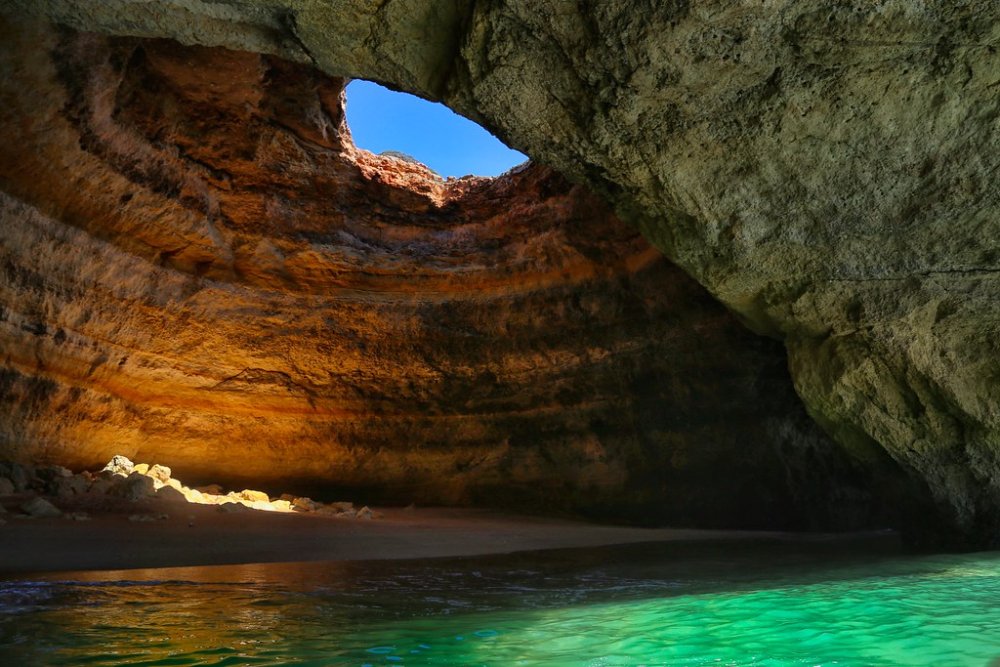Imagine standing on a rugged coastline, the salty breeze whipping through your hair, as the waves crash against the rocks. Suddenly, you notice a dark opening in the cliffside, a passage leading into the unknown. This is a sea cave, a natural wonder that has intrigued explorers and adventurers for centuries. Continue reading to understand how sea caves are formed.
Sea caves aren’t just random formations; they are the result of years of nature’s hard work, carving out spaces within solid rock. But how are sea caves formed? What’s the story behind these mysterious formations, and why should we care? Well, let’s dive into the fascinating world of sea caves and explore how they come to be.
The Science Behind Sea Caves
Sea caves are formed through a process called erosion, where the relentless power of waves wears away at the rock, slowly carving out a hollow space. Over time, these small openings expand into larger chambers, creating the sea caves we see today.
However, the process is anything but simple. It’s a dance between the sea and the rock, with the waves constantly pounding against the cliffside, wearing away the weakest parts. This process can take thousands, even millions, of years. It’s a reminder of how patient nature is, slowly but surely shaping the world around us.
The Formation of Sea Caves
How Erosion Works
Erosion is the key player in the formation of sea caves. It all starts with the constant pounding of waves against the rock. Over time, the force of the water begins to wear away at the weakest parts of the cliffside. Cracks and fissures form, and as the waves continue to push against them, these small openings gradually expand.
The process is slow, taking hundreds, thousands, or even millions of years. But eventually, a small cave begins to take shape. As the waves keep pounding, the cave grows larger and larger, until it becomes the impressive sea cave we see today.
Types of Rocks Involved
Not all rocks are created equal when it comes to forming sea caves. Softer rocks, like limestone, are more susceptible to erosion and are therefore more likely to form sea caves. On the other hand, harder rocks, like granite, are more resistant and take much longer to erode.
This is why sea caves are often found in areas with softer rock formations. The waves can easily carve into the limestone, creating large, cavernous spaces.
The Role of Tides
Tides also play a significant role in the formation of sea caves. When the tide is high, water rushes into the cave, exerting pressure on the walls and ceiling. As the tide recedes, the water flows out, creating a vacuum effect that pulls air and debris into the cave.
This constant movement of water in and out of the cave helps to further erode the rock, gradually expanding the cave over time.
Why Sea Caves Matter to Us
You might be wondering, “Why should I care about sea caves?” Well, sea caves are more than just geological formations. They’re a reminder of nature’s power and beauty, a testament to what time and persistence can achieve. For some, they represent a place of solitude and reflection, a spot where you can escape the hustle and bustle of everyday life.
But there’s a problem: sea caves are also fragile. As climate change causes sea levels to rise and weather patterns to become more extreme, these delicate formations are at risk. It’s up to us to protect them, ensuring that future generations can enjoy their beauty.
The Wonders Inside Sea Caves
The Beauty of Sea Cave Ecosystems
Inside a sea cave, you’ll find a unique ecosystem that’s different from the surrounding ocean. The cave provides a sheltered environment, where various marine creatures can thrive. You might find colorful sea anemones clinging to the walls, small fish darting in and out of crevices, and even the occasional octopus hiding in the shadows.
These ecosystems are delicate, relying on the stable conditions within the cave to survive. Any disruption, whether it’s from human activity or environmental changes, can have a significant impact on the life within.

The Magic of Bioluminescence
One of the most enchanting features of some sea caves is the presence of bioluminescent organisms. These tiny creatures emit a soft, glowing light, creating a magical, otherworldly atmosphere within the cave.
Imagine paddling into a sea cave at night, the only light coming from the twinkling stars above. As you move deeper into the cave, the water around you begins to glow with an eerie, blue-green light. It’s an experience you’ll never forget, a moment of pure wonder that stays with you long after you’ve left the cave behind.
The Risks to Sea Caves
Climate Change and Rising Sea Levels
One of the biggest threats to sea caves is climate change. As global temperatures rise, so do sea levels. This puts additional pressure on sea caves, as the increased water levels and more frequent storms can accelerate the erosion process.
In some cases, rising sea levels can even submerge sea caves entirely, cutting off access to these natural wonders and disrupting the ecosystems within.
Human Impact
Human activity also poses a significant risk to sea caves. Pollution, coastal development, and overfishing can all hurt these fragile environments. Even the simple act of exploring a sea cave can cause damage, as the presence of humans can disturb the delicate balance of the cave’s ecosystem.
It’s important to be mindful of our actions and to take steps to minimize our impact on sea caves. This can include supporting conservation efforts, reducing our carbon footprint, and educating others about the importance of protecting these natural wonders.

You Might Like to Ask
How long does it take for a sea cave to form?
Sea caves can take thousands to millions of years to form, depending on the type of rock and the intensity of the waves. It’s a slow but persistent process.
Which process is responsible for forming a sea cave?
Erosion is the primary process responsible for forming sea caves. The relentless action of waves wearing away at the rock is what creates these stunning formations.
What is the mode of formation of coastal caves?
Coastal caves, including sea caves, form through the erosion of rock by the constant force of waves. Over time, this erosion carves out the hollow spaces we know as caves.
What are the 3 main ways caves are formed?
Caves can form through erosion by water, volcanic activity, and the dissolution of soluble rocks like limestone. Each process creates different types of caves.
Why is cave water so clear?
Cave water is often clear because it’s filtered through the rock, removing impurities. The lack of sunlight also prevents the growth of algae, keeping the water pristine.
How do underwater caves work?
Underwater caves are formed by the same process of erosion, but they remain submerged. They often have unique ecosystems and can be dangerous to explore due to strong currents.
What is the deepest cave in the world?
The deepest cave in the world is the Veryovkina Cave in Georgia, which reaches a depth of over 2,200 meters. It’s a testament to the incredible power of nature.
Conclusion: Nature’s Masterpiece
Sea caves are a beautiful reminder of the power of nature. Formed over thousands or millions of years, they stand as a testament to patience, persistence, and the delicate balance of our environment. By understanding how sea caves are formed, we can better appreciate their beauty and importance—and take steps to protect them for future generations.
Read about how caves and caverns are formed.
